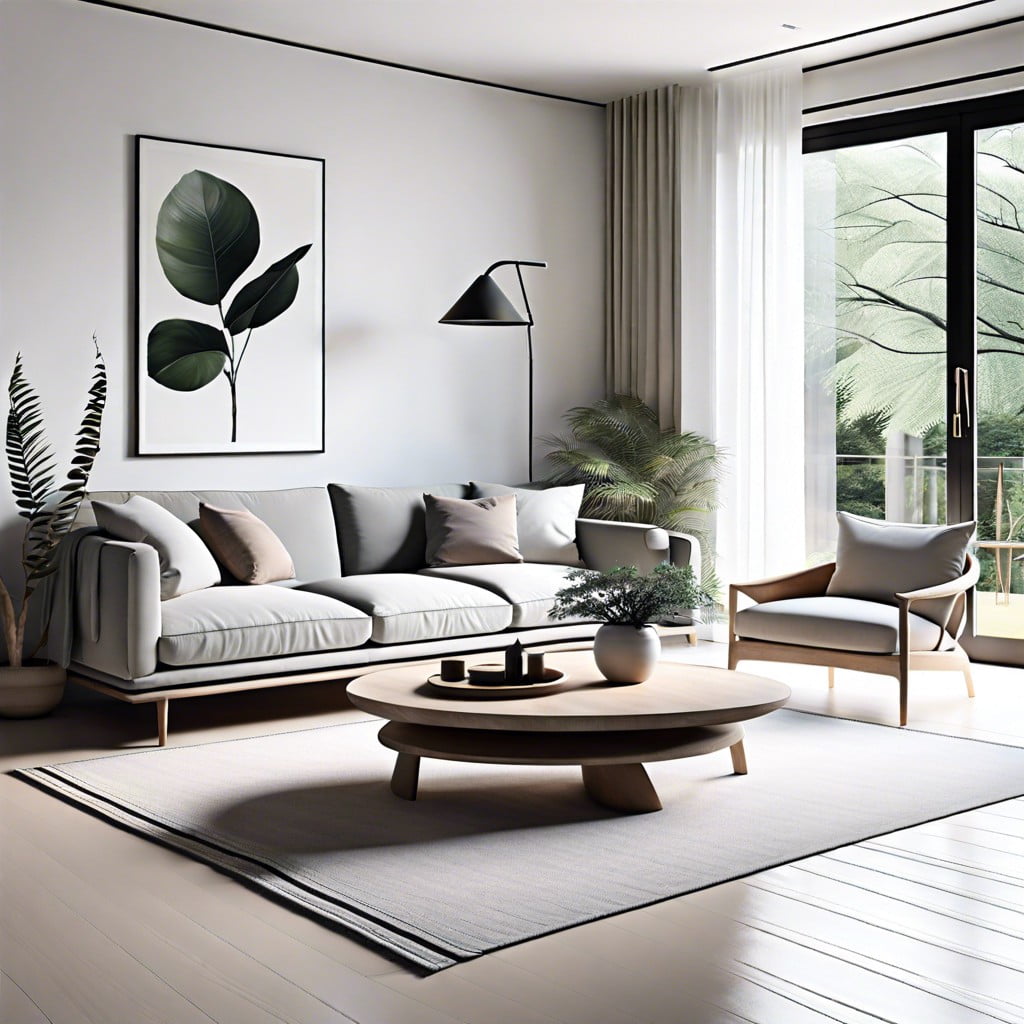Last updated on
Discover how embracing minimalist decluttering can transform your space and simplify your life, with practical before-and-after examples.
Key takeaways:
- Embrace simplicity, functionality, and quality in home decor.
- Identify clutter hotspots and assess what they actually contain.
- Declutter one area at a time, categorize items, and reorganize.
- Experience visual and emotional transformations after decluttering.
- Maintain minimalism with a one-in, one-out rule and regular decluttering sessions.
Table of Contents
Definition of Minimalism in Home Decor

Minimalism in home decor is all about reducing excess and living with items that only serve a purpose or bring joy. Here are key concepts to understand:
- Simplicity is key: This style emphasizes clean lines, a monochrome color palette, and a tidy appearance that avoids overwhelming the senses.
- Functionality over quantity: Every item in a minimalist home should have a practical use or hold significant personal value. If it doesn’t contribute, it doesn’t stay.
- Quality over quantity: With fewer items, each piece often represents investment in quality rather than quantity, meaning more durable, thoughtfully chosen, and often timeless pieces.
- Minimal maintenance: Fewer belongings mean less cleaning, less organizing, and more time saved. This also leads to a visually tranquil environment that supports calmness and relaxation.
- Visual harmony: A minimalist approach seeks to create balance and coherence in space, often using a neutral color scheme to enhance the sense of unity and spaciousness.
These elements work together to create a living space that feels clear, functional, and inviting.
Identifying Clutter Hotspots in the Home
Here’s a little secret: clutter hotspots aren’t playing hide and seek, they’re just where life happens! Start your detective work in areas that frequently collect items—these are usually surfaces and spaces where items are dumped because, let’s face it, decisions can be exhausting.
Scan the usual suspects: the entryway, kitchen counters, dining table, bedside tables, and the living room coffee table. These are prime real estate for stray mail, loose change, keys, and yesterday’s half-finished water bottles.
Then, move on to the hidden depths: closets, drawers, entertainment units, and that chair in your bedroom that has unofficially retired into a wardrobe. The key is to assess these areas not for what they’re meant to hold, but for what they actually contain. Be ruthless in your assessment because clutter has a sneaky way of disguising itself as ‘temporary storage’.
Finally, poke your head into less trafficked spots like laundry rooms, basements, and attics. They might not be daily encounter zones, but they’re clutter magnets, accumulating everything from out-of-season decorations to “what-was-I-thinking” purchases.
Remember, effective decluttering starts with a good map. Knowing where the treasure—or in this case, trash—lies, makes the quest much simpler!
Steps Taken for Decluttering Each Area
Begin by selecting one area at a time to avoid overwhelm. Start with the easiest spot to build momentum—this could be a drawer or a specific shelf.
For each selected area, remove all items. Yes, every single one! This blank canvas approach gives a better perspective on the space and helps in making decisions.
Divide your items into clear categories: keep, donate, sell, or throw away. Be ruthless yet thoughtful. If an item hasn’t been used in a year and doesn’t bring joy or have a definitive future use, it’s probably time to say goodbye.
Reorganize the items you decide to keep. Use organizers like dividers, boxes, or baskets to assign everything a proper home. This helps maintain order and prevents items from being misplaced or cluttering the space again.
Finally, take care of the discard pile immediately. Drop off donation items, list things for sale, or throw away unusable things to prevent second-guessing and clutter creep.
By systematically addressing each area, you transform the space step by step, making the task manageable and even enjoyable.
After the Declutter: Visual and Emotional Changes
Once your space is decluttered, the transformation can be striking. Walls that were previously hidden by stacks of old magazines now breathe freedom into the room. Shelves show off their elegant simplicity, holding only a few chosen items that spark joy or fulfill a function.
This visual clarity often leads to a profound emotional shift. The chaos of clutter can subconsciously fuel anxiety and stress. When that clutter is cleared, many people report feeling lighter, as if a literal weight has been removed from their surroundings. The simplicity of the environment allows for easier cleaning, reduced decision fatigue about what to clean or organize next, and more room for creativity.
Moreover, with less to sort through, finding what you need becomes a breeze. This aspect alone can significantly cut down on the frustration of lost items. Not only does this fresh, minimalist environment make for a pleasing aesthetic, but it also promotes serenity and order, improving overall quality of life.
Maintenance Tips for Sustaining Minimalism
Keeping your space minimalist isn’t just a one-time purge; it’s about embracing continuous small actions to prevent the rebound of clutter. Here’s how you can keep the tides of possessions at bay:
Establish a one-in, one-out rule: Whenever a new item crosses your threshold, a similar item should leave. This helps prevent accumulation and keeps your decision-making sharp!
Set aside regular decluttering dates: Just like you’d set a date for a haircut or a dental check-up, schedule monthly or quarterly mini decluttering sessions. This keeps things manageable and fun.
Be mindful about purchases: Before buying something new, ask if it really fits with your minimalistic goals. It’s like being a bouncer at the club of your living space — not everyone gets in!
Implement designated spaces for items: Every widget needs a home. By assigning a specific space for each item, you reduce the risk of random things loitering around your house like unwanted party guests.
Rotate decorations and clothing seasonally: Storing out-of-season items out of sight keeps your space clean and ensures every item really earns its keep in the prime real estate areas of your home.
By following these tips, you can enjoy the benefits of a minimalist space without slipping back into chaos. Enjoy the freedom and clarity a decluttered space brings!




